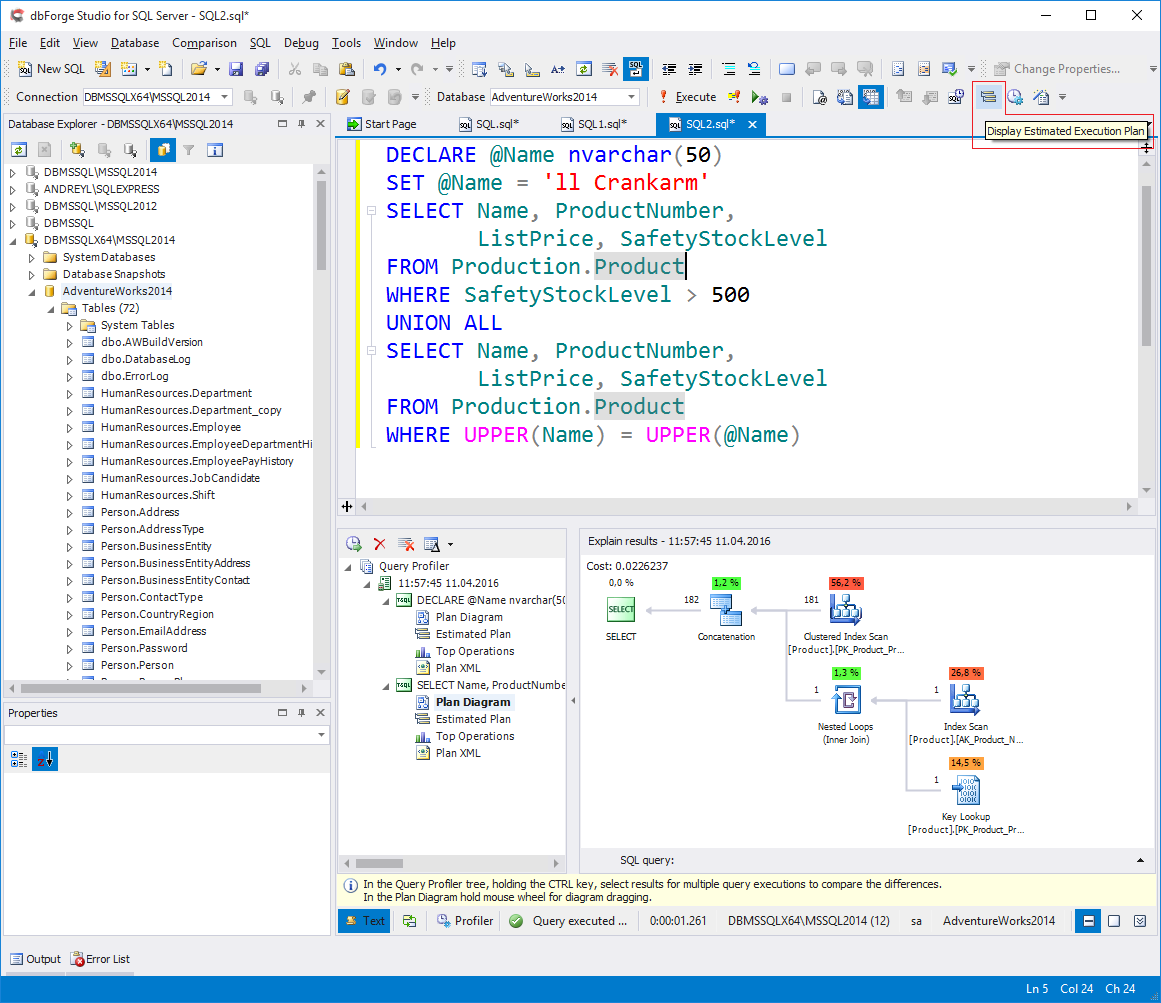Overview of Query Rewrite When base tables contain large amount of data, it is expensive and time-consuming to compute the required aggregates or to compute joins between these tables. In such cases, queries can take minutes or even hours.
Sep 18, 2008 Dear All, there is one good tool for sql server which works for almost every aspect. The specialty is it automatically re. Rewriting SQL for faster performance. Plus faster performance is an important tuning tool. Rewrite SQL to remove. Rewrite SQL to simplify query.


Because materialized views contain already precomputed aggregates and joins, Oracle Database employs an extremely powerful process called query rewrite to quickly answer the query using materialized views. One of the major benefits of creating and maintaining materialized views is the ability to take advantage of query rewrite, which transforms a SQL statement expressed in terms of tables or views into a statement accessing one or more materialized views that are defined on the detail tables.
The transformation is transparent to the end user or application, requiring no intervention and no reference to the materialized view in the SQL statement. Because query rewrite is transparent, materialized views can be added or dropped just like indexes without invalidating the SQL in the application code. A query undergoes several checks to determine whether it is a candidate for query rewrite. If the query fails any of the checks, then the query is applied to the detail tables rather than the materialized view. This can be costly in terms of response time and processing power. Barcode Producer 6.2 Serial Number.
The optimizer uses two different methods to recognize when to rewrite a query in terms of a materialized view. The first method is based on matching the SQL text of the query with the SQL text of the materialized view definition. If the first method fails, the optimizer uses the more general method in which it compares joins, selections, data columns, grouping columns, and aggregate functions between the query and materialized views.
Query rewrite operates on queries and subqueries in the following types of SQL statements: • SELECT • CREATE TABLE AS SELECT • INSERT INTO SELECT It also operates on subqueries in the set operators UNION, UNION ALL, INTERSECT, and MINUS, and subqueries in DML statements such as INSERT, DELETE, and UPDATE. Dimensions, constraints, and rewrite integrity levels affect whether or not a given query is rewritten to use one or more materialized views. Additionally, query rewrite can be enabled or disabled by REWRITE and NOREWRITE hints and the QUERY_REWRITE_ENABLED session parameter. The DBMS_MVIEW.EXPLAIN_REWRITE procedure advises whether query rewrite is possible on a query and, if so, which materialized views will be used. It also explains why a query cannot be rewritten. When Does Oracle Rewrite a Query?
A query is rewritten only when a certain number of conditions are met: • Query rewrite must be enabled for the session. • A materialized view must be enabled for query rewrite. • The rewrite integrity level should allow the use of the materialized view. For example, if a materialized view is not fresh and query rewrite integrity is set to ENFORCED, then the materialized view is not used.
• Either all or part of the results requested by the query must be obtainable from the precomputed result stored in the materialized view or views. To test these conditions, the optimizer may depend on some of the data relationships declared by the user using constraints and dimensions, among others, hierarchies, referential integrity, and uniqueness of key data, and so on. Ensuring that Query Rewrite Takes Effect You must follow several conditions to enable query rewrite: • Individual materialized views must have the ENABLE QUERY REWRITE clause. • The session parameter QUERY_REWRITE_ENABLED must be set to TRUE (the default) or FORCE.
• Cost-based optimization must be used by setting the initialization parameter OPTIMIZER_MODE to ALL_ROWS, FIRST_ROWS, or FIRST_ROWS_ n. License Key For Ship Simulator. If step 1 has not been completed, a materialized view will never be eligible for query rewrite. Initialization Parameters for Query Rewrite The following three initialization parameter settings control query rewrite behavior: • OPTIMIZER_MODE = ALL_ROWS (default), FIRST_ROWS, or FIRST_ROWS_ n With OPTIMIZER_MODE set to FIRST_ROWS, the optimizer uses a mix of costs and heuristics to find a best plan for fast delivery of the first few rows.
When set to FIRST_ROWS_ n, the optimizer uses a cost-based approach and optimizes with a goal of best response time to return the first n rows (where n = 1, 10, 100, 1000). • QUERY_REWRITE_ENABLED = TRUE (default), FALSE, or FORCE This option enables the query rewrite feature of the optimizer, enabling the optimizer to utilize materialized views to enhance performance. If set to FALSE, this option disables the query rewrite feature of the optimizer and directs the optimizer not to rewrite queries using materialized views even when the estimated query cost of the unrewritten query is lower.